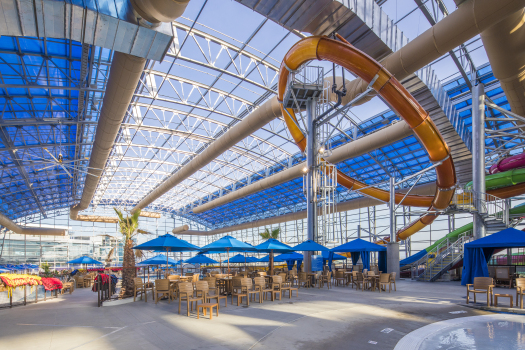As COVID-19 continues to hammer the hospitality industry, hotel F&B outlets are also continuing to adapt. This latest Hotel News Now article, which includes insights form H&LA’s David Sangree, reports that Food-and-beverage outlets have changed their layouts, enacted new protocols and scaled back the once-popular communal dining trend.
Published by: Laura Koss-Feder/Hotel News Now
Published date: July 2020
As COVID-19 dining regulations are gradually lifted throughout the nation, reinstating food-and-beverage services at hotels is one of the most challenging new dilemmas.
Hotels are using careful planning and creativity to ensure their employees, guests and local diners are as safe as possible, while also bringing in much-needed revenue to a hurting industry.
“Hotel dining may actually be the last part of the hotel stay to return to some sense of normal,” said David Sangree, president of Hotel & Leisure Advisors. “The reason some hotels have been able to operate with very low occupancies and revenues rather than closing during the months of April and May is because they have made severe cutbacks in their amenities and services, especially concerning food-and-beverage operations.”
Start with social distancing
Prism Hotels & Resorts has removed most of the tables and chairs in its restaurants and spaced them apart to allow for social distancing, resulting in less congestion, said Ghee Alexander, SVP of operations. The focus now also must be to drive to-go orders as the way to make up for lost revenue.
“The fewer surfaces the better, as we are constantly monitoring and sanitizing them,” Alexander said. “Where restaurants have access to outdoors, this is an ideal place to set up a to-go kiosk that can serve both guests and non-guests.”
Prism‘s F&B staff are required to wear masks and gloves and must conduct temperature checks at the beginning of shifts and after meal breaks.
Being back in touch with regular local diners is also now more important than ever, said Ron Vlasic, COO of Hostmark Hospitality Group.“Daily training and standup meetings with our staff are critical to make sure guests are receiving clear, empathetic and consistent communications from all of our team members,” Alexander said. “We all have to be on the same page, and firmly reinforce that the safety of our team members and guests is not flexible or open to interpretation.”
“I think everyone is dealing with the lost revenue in their own way and there are limitations on what you can or cannot do to try and make up that lost revenue,” he said. “But to us what is important is reconnecting with our customers that have always been there, and seeing old friends who are coming back to support their favorite waiter or waitress or saying hello to the chef and the culinary team.”
Some of Prism’s hotel restaurants have worked on developing grab-and-go concepts. Small tastings or creative snacks have been popular with guests, which give the culinary teams at the hotels an opportunity to think of new creative offerings.
Across its portfolio, Hyatt Hotels Corporation is leveraging technology to minimize contact in its restaurants. For example, new QR codes allow guests to explore restaurant menus from their own mobile device. Through the World of Hyatt mobile app, many hotels provide guests with the ability to place orders for pickup and manage F&B payments, said Steve Enselein, Hyatt’s SVP of events.
Changing operations and spaces
Operations also have changed. Restaurants offering self-service buffets have switched to à-la-carte menus, made-to-order options or individually wrapped items to-go, and all servers and bartenders are instructed to wear personal protective equipment. Additional options include “knock-and-go” room service for guests and takeout and delivery at participating properties for local residents.
“Hotels around the world are experimenting with new F&B offerings and dining venues,” Enselein said.
For instance, the Hyatt Regency Huntington Beach Resort and Spa is offering a picnic basket dinner that guests can eat on the hotel’s lawn overlooking the Pacific Ocean as private dining experiences are a growing trend. Hyatt is trying to personalize guests’ F&B experiences, with offers like in-room mixology kits and private cooking sessions with chefs in suites.
Remington Hotels has begun maximizing outdoor space and using non-traditional areas for serving food, such as pool decks. However, the seating capacities for doing so are limited, said Don Falgoust, VP of food-and-beverage strategy execution.
The 293-room Kimpton Gray Hotel in Chicago is spacing tables 6 feet apart in its rooftop bar, Boleo, said GM Nabil Moubayed. As the hotel moves into the next reopening phase, it will continue to social distance by 6 feet but make use of its full space. Boleo also features a to-go menu.
“We also ask that guests make reservations ahead of time and stagger them so we can move people quickly in and out of Boleo,” Moubayed said.
Phasing out concepts
The once-growing trend of communal tables is now back-burnered, sources said.
“This trend has been largely curtailed for the foreseeable future due to social distancing requirements,” Sangree said.
Falgoust said that communal serving utensils and all-you-can-eat buffets also will fade away.
“The dining patterns pre-COVID-19 have shifted to healthier dietary habits,” he said. “The communicable nature of those buffets and shared serving utensils will remain a high point of sensitivity post COVID-19 as well.”
Vlasic said figuring out how to be communal and socially distant all at once will be the challenge down the road.
“But we will rise to the occasion as an industry and there are a lot of creative people that are working on this very dilemma,” Vlasic said. “It’s too early to tell what that looks like now, but we will see some new practices out there very soon.”


